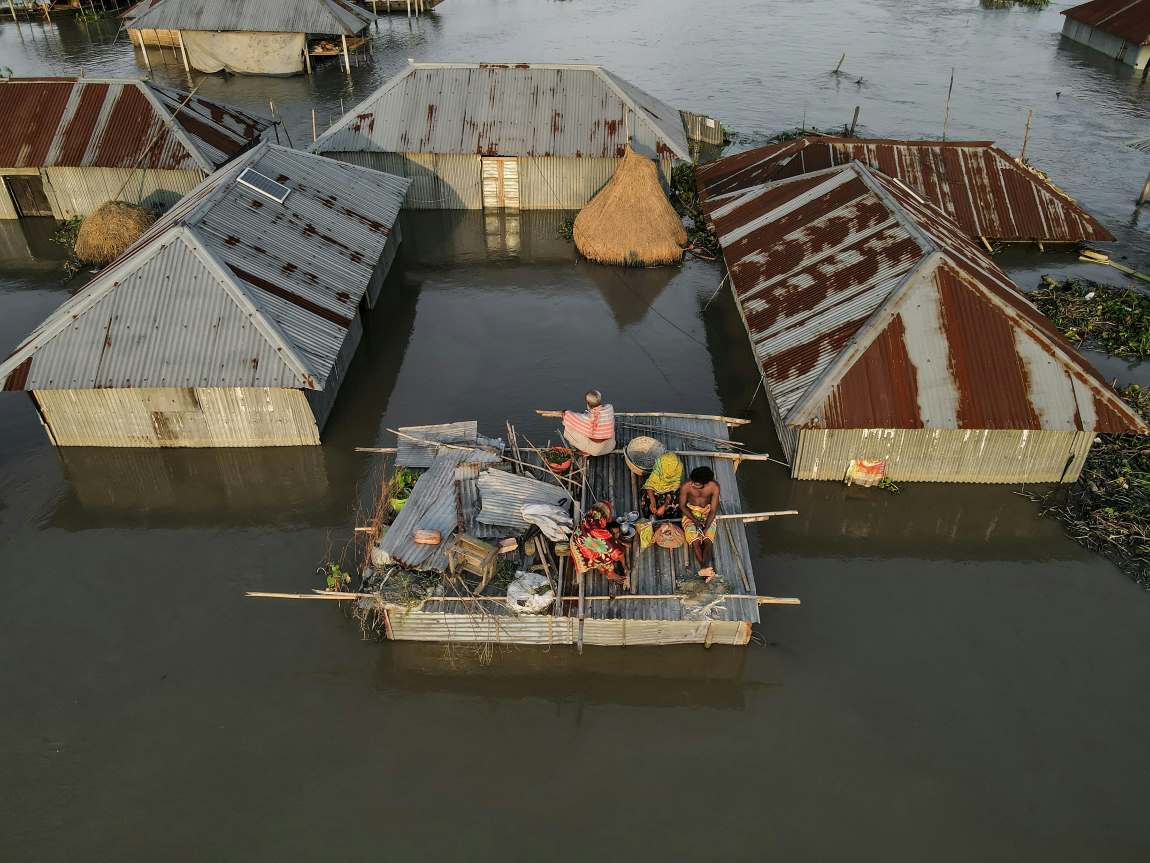By Shafiqul Islam, Tufts University | 360info
Bangladesh has shown how its ‘engineering diplomacy’ approach to managing a flood crisis could be a pathway to resilience.
Bangladesh faced a formidable double challenge in August.
A historic uprising unseated a long-standing prime minister, and just as the new interim government took charge, floods devastated the nation, leaving millions in despair. These events aren’t just a national concern — they carry lessons that resonate globally.
Relentless rain
August’s floods were unprecedented in their scale and impact. They were the result of a complex interplay of several climatic phenomena — intensified monsoon rains, the Madden-Julian Oscillation and an unusual jet stream pattern — that led to unprecedented rainfall across South Asia. The city of Feni received 312mm of rain in one day.
Unlike previous major floods caused by the Ganges, Brahmaputra and Meghna rivers, this year’s deluge was driven by smaller rivers in the southeast and northeast, with brutal force. The floods started early and developed fast, catching many off-guard.
Tropical Storm Remal affected southern Bangladesh and eastern India in late May, prompting widespread floods.
Then, mid-June brought relentless rains that submerged large regions, causing severe flooding in Sylhet, Feni and Cumilla.
On August 17 and 18, a monsoon low-pressure system developed over the Bay of Bengal and adjacent coastal areas.
This system remained there for two days, dumping huge rainfalls on the coast and the hilly regions of southeastern Bangladesh.
Rising rivers
River levels rose. On the 19th, this low-pressure system intensified into a depression. Initially, the forecast suggested that this system would move toward Bihar through West Bengal, India.
However, it suddenly entered Bangladesh and remained over the central part of the country until August 20.
The situation took a dramatic turn as Feni recorded an unprecedented 312mm of rain in a single day on August 21.
Additionally, a significant amount of rain fell over river basins spanning India and Bangladesh. This deluge caused several rivers in the region to swell beyond danger levels.
In some areas, the rainfall was two to three times higher than usual, which overwhelmed the river systems and led to widespread inundation.
Tidal surge
While extreme rainfall has been the primary catalyst for these floods, there is also speculation that the release of excess water from dams and barrages in India may have contributed.
In addition to the rainfall, the low-pressure system caused a higher-than-usual tidal surge. August 19 was also a full moon, which further elevated the tidal surge.
This caused obstacles to the natural drainage of river water, leading to severe flooding. Much of this information was available in the Flood Forecasting and Warning Centre, maintained by the Bangladesh Water Development Board.
It appears that this information was not disseminated effectively to local agencies because of the chaos and confusion created after the fall of the government in early August.
Crisis management challenges
In times of disaster, emotions often run high, clouding the facts.
In Bangladesh, this was evident as public anger quickly turned toward India, with accusations upstream dam releases had worsened the flooding.
While such claims were difficult to substantiate, the sentiment was clear — mistrust between neighbours can exacerbate the impact of natural disasters.
This mistrust is not new. Since Bangladesh’s independence in 1971, the relationship between Bangladesh and India has been tense, much of it rooted in perceived economic and political dominance by New Delhi.
August’s floods brought these issues to the fore, highlighting long-standing grievances over water sharing, trade imbalances and employment dynamics.
But beyond the finger-pointing lies a deeper truth: global challenges such as climate change and natural disasters cannot be effectively managed without cooperation.
This is where the notion of engineering diplomacy — the integration of technical expertise with diplomatic efforts — becomes crucial.
Engineering diplomacy is not just about building infrastructure; it’s about building trust and fostering cooperation. It’s a principled, pragmatic approach that combines the problem-solving rigour of engineering with the nuanced negotiations of diplomacy.
Opportunities from crisis
For Bangladesh, this year’s flood provided two opportunities to turn crisis into cooperation building on the notion of engineering diplomacy.
First, the swift and effective response by student-led groups demonstrated the power of community-driven initiatives. These efforts not only provided immediate relief but also reinforced the importance of local engagement in building resilience.
Second, it means engaging India and other neighbours in developing shared solutions that are technically sound, socially acceptable, ethically responsible and politically feasible.
Consider the recent proposal by Bangladesh’s interim government to establish a high-level mechanism with India for joint disaster management.
This initiative, rooted in the principles of engineering diplomacy, is a significant step toward building regional resilience.
By working together on flood forecasting, emergency response and resource management, Bangladesh and India can not only mitigate the impacts of future disasters but also build a foundation for greater cooperation on other shared challenges.
Lessons for the world
The 2024 floods in Bangladesh offer critical lessons for the global community.
First, they underscore the urgent need for robust, cooperative mechanisms to address the increasingly frequent and severe impacts of climate change.
The science is clear: no country can tackle these challenges alone. International collaboration, grounded in mutual trust and shared responsibility, is essential.
Second, the floods highlight the importance of integrating local knowledge and grassroots action into disaster management strategies.
Finally, Bangladesh’s experience underscores the need for a new narrative in global diplomacy — one that moves beyond blame and toward joint problem-solving.
The tensions between Bangladesh and India are not unique; similar dynamics play out in regions around the world where shared resources and geopolitical interests intersect.
Engineering diplomacy offers a framework for navigating these complexities, turning potential conflicts into opportunities for cooperation.
As the world confronts the escalating threats of climate change, the lessons from Bangladesh’s 2024 floods are clear.
We must embrace a new approach —one that blends technical expertise with diplomatic finesse to build a more resilient, cooperative global community.
Engineering diplomacy provides a path forward, not just for managing disasters but for crafting a future where nations work together to tackle shared challenges.
***
Shafiqul Islam Shafik is a professor in the Department of Civil and Environmental Engineering and a professor of water diplomacy at the Fletcher School of Law and Diplomacy at Tufts University. He has authored five books in water diplomacy and over 100 refereed journal publications on related topics. Dr. Islam is the Director of the Water Diplomacy Program. He is a Fellow of the American Geophysical Union and Editor of Water Resources Research and the recipient of the Prince Sultan Bin Abdulaziz International Water Prize for Creativity. More information is available here and here.
Originally published under Creative Commons by 360info™.
Featured image credit: Muhammad Amdad Hossain | Pexels




